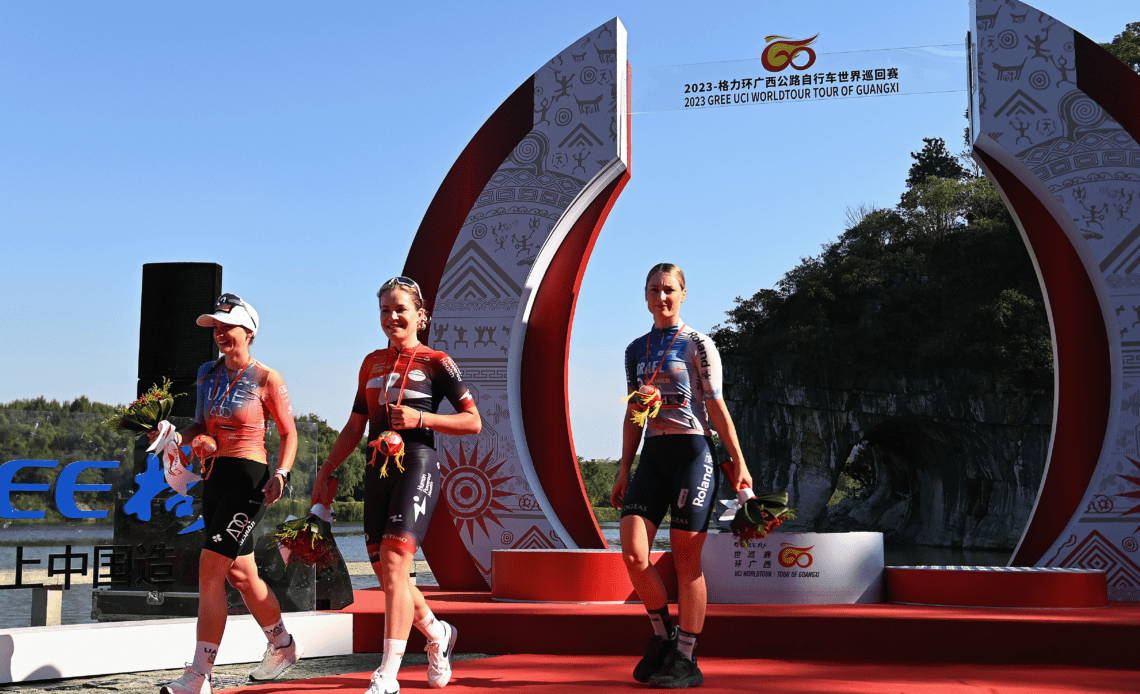Last Friday, this writer pointed out the differences in broadcast quality between the women’s Tour of Chongming Island and the men’s Tour of Guangxi, highlighting the lower standard applied to the women’s race. However, the disregard with which the organisers of the Tour of Guangxi treat their own women’s race is on a level that would almost be comical if it weren’t so saddening.
Getting to see only the final 19 kilometres of stage 2 of the Tour of Chongming Island wasn’t ideal – but overall, the quality and length of that race’s live broadcasts were alright. But there was no broadcast whatsoever of the women’s one-day race, a neglect made even more glaring by comparison to the six-day men’s stage race that enjoyed between 70 and 90 minutes of live coverage each day.
To be fair, this situation hasn’t become worse since the last edition of the race in 2019 since the women’s race wasn’t broadcast then either – but it also hasn’t become any better on the return of the Tour of Guangxi from a three-year hiatus due to the Covid-19 pandemic.
The forested karst mountains south of Guilin offered a beautiful backdrop for the men’s final stage and would have made for an equally attractive broadcast of the women’s race, but no live footage was produced. And unlike 2019, there wasn’t even a replay of the women’s sprint finish included in the men’s broadcast.
When other Women’s WorldTour races did not offer a live broadcast in the past, they did take the opportunity to offer frequent live updates e.g. via Twitter. However, while the Tour of Guangxi Twitter account regularly sent out updates on the men’s race, it never even mentioned that there was a women’s race before or during the race, only tweeting the top three and the winners of the various secondary classifications after the finish. Were it not for the UCI’s Women’s WorldTour updates on its own website, there would not have been any live information at all.
What’s more, the website for the women’s event saw its last update shortly after the 2019 edition when a photo of the finishing sprint was added. The race date given front and centre is still that of the 2018 edition, the list of participating teams is a strange mix of teams from 2017, 2018, and 2019, and the race results page only shows the 2017 result. Almost the only redeeming feature is that the full results were available very soon after the race finished.
Needless to say, this treatment not only knocks…
Click Here to Read the Full Original Article at CyclingNews RSS Feed…

